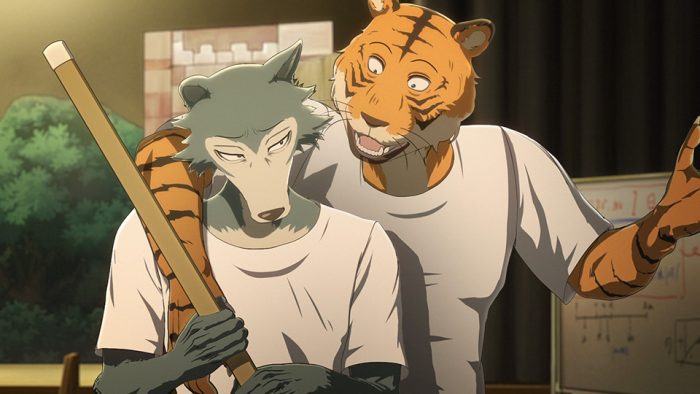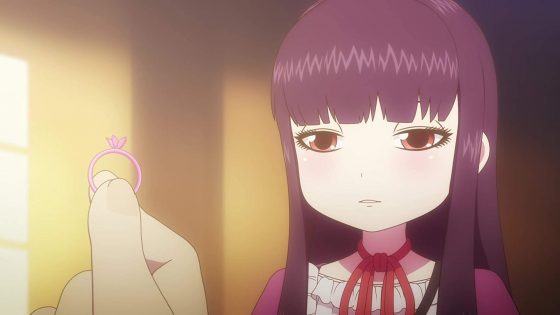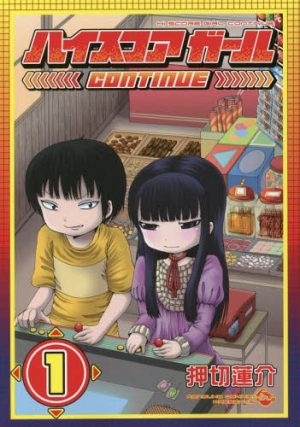
At the time of writing, BEASTARS and High Score Girl's second series are the second and fourth highest-rated shows of the Fall 2019 anime season respectively according to user ratings on My Anime List. And they deserve it, too. One is a brilliant psychological fantasy with intriguing characters that holds up a mirror to just about every facet of human society with its animal cast and the other is among the rare romcoms to actually be romantic and comedic while recreating its 90s Japanese arcade boom backdrop with refreshing accuracy. However, in terms of number of viewers, they are curiously the ninth and twenty-fifth respectively.
What could cause such a massive discrepancy in these shows’ viewership? Could it be because they’re licensed by Netflix, which famously alienates a portion of the simulcast audience by only streaming their anime after they finish airing domestically? It might play a part, but Violet Evergarden, Little Witch Academia and plenty of other greats were released the same way and received much more consistent attention. What makes those shows different than Beastars and High Score Girl?
Well if you're familiar with otaku discourse (or just read the title) you probably know that the answer is the newer shows' visuals, which exclusively use computer-generated animation. Beastars and HSG’s dearth of popularity is only the most recent example of the disrespect the otaku community holds for CG and we’re here to highlight why that is, why it’s wrong and why this attitude needs to change.
The Hate
In all fairness, there is a historical precedent that could justify audience apprehension towards CG anime. Its proliferation in the medium began in the early 80s before the technology had progressed to the point where renders could look convincing and spent the rest of the twentieth century being generally only used as an alternative measure for assets in traditional anime that would be difficult to animate by hand. Many of you reading this probably remember reading all about people's disappointment on forums, subreddits, and message boards whenever CG assets reared their head on TV. They were dismissed as being lazy low-quality shortcuts.
And while they certainly were at many points, that generalization is completely unfair. 3D animation stands apart from 2D as an individual artistic medium in its own right with its own strengths and weaknesses. Furthermore, CG integration in film has progressed incredibly quickly and its contributions to anime have been just as consistent as its failures. The likes of Ghost in the Shell, Cowboy Bebop, and Summer Wars are widely agreed to be among the best the medium has to offer, and they all make regular use of 3D. While awful misuses of the technique are still around today, to reject anything that makes uses of its unique toolset is completely unfair and (given the recent growth of CGI anime) while make you miss out on some of the greatest stories to come from Japan today.
CGIntellectuals
CGI series and films have been popping up from just about everywhere, but only a few studios use the style consistently. And by looking at their output, we can realize not only the high quality the method can yield but also the endless variety of creative uses that smart animators can wring from it, which rival even that of traditional anime.
The most recent CGI success story comes from studio Larx Entertainment, who went from no-names to overnight sensation with only their third project: An adaptation of Yabako Sandrovich and Daromeon’s sensational manga Kengan Ashura. Though it remains their only fully CG show so far, its 2 seasons have been met with more than enough success to leave fans wondering what they’ll do next. Granted, many abhorred the show’s visuals for their awkward movements and the fact that Larx’s decision to artificially limit the framerate to emulate normal film stock was incredibly out of place for the medium. Nevertheless, Kengan Ashura's rare ability to render numerous highly detailed character models at once coupled with its undeniable ability to tell a compelling story through the often-dismissed art form makes Larx’s work entirely worth your attention.
Polygon Pictures is the oldest name in the not-very-old game, having established itself in 1983 and worked on animated ads most of its life before breaking into TV anime with hits like Knights of Sidonia, Ajin and Sanzoku no Musume Ronja before expanding into film with Blame!, Human Lost and its Godzilla trilogy. They can not only put out work that’s better than traditional anime, but they can do it fast, having crafted 20 different notable titles since throwing themselves into the anime ring a mere 5 years ago. Though they share Larx’s problem of awkwardly limited framerates while having a few issues uniquely their own like a chronic case of same-face syndrome. But what their presentation lacks in distinctive modeling, it more than makes up for with consistently high visual fidelity and brilliant use of 3D camera movement. Lesser CGI anime sometimes degrade action scenes into badly-coordinated unfollowable messes by abusing the freedom the medium allows through unintelligent camera movements that only serve to distract and disorient. Polygon Pictures, on the other hand, has mastered this technique and only uses it to complement the action, presenting complex sequences in unbroken motions and highlighting its points of interest in a way that always keeps the intensity high.
The last stop on the CGI anime hype-train is SANZIGEN, who is generally thought of as an exclusively 3D animation producer, but actually blends hefty amounts of both hand-drawn and computer-generated assets to make its shows. We can hear the collective groan from those of you reading this thinking about all the times you've seen that blend work like oil and water, but SANZIGEN makes it more seamless than just about any other TV anime thanks to state-of-the-art bitmap animation software that allows for convincing layering and an equally impressive roster of skilled artists who know how to make it work. It's probably because SANZIGEN works with hand-drawn animation so much that their shows tend to adopt the most visually striking elements of traditional anime, namely instantly memorable character designs, strong key-poses, and expressive shot-composition. Their only real problem is that their undeniable talent for illustration is rarely matched by their storytelling. They can really shine when adapting interesting narratives as seen in their Initial D films, but their originals like Bubuki Buranki and ID-0 tend to fall into the awkward status of matching powerful images with a weak plot. It’s a frustrating shortcoming, but it doesn’t stop them from being yet another example of how great CGI anime can be.
Final Thoughts

And those are only the anime studios primarily focused on animating in 3D. Plenty of great studios known for their hand-drawn shows have been releasing CGI anime that are just as great. Orange’s Houseki no Kuni, Shin-Ei Animation’s Stand by Me Doraemon and Toei’s Captain Harlock film are all wonderful displays of animation masterclass that viewers will have to deprive themselves of if they chose to reject fully-CGI shows, so we encourage everyone to give them a shot.
We also encourage everyone to leave a comment letting us know what they think of 3D anime and what their favorite and least favorite titles in the medium are, as well as staying on Honey’s Anime as we continue to cover the progression of this wonderful computer-generated art form.
Recommended Post
BEASTARS
Recommended Post
Bubuki Buranki - Anime Winter 2016
Recommended Post
Ajin - Anime Winter 2016
Recommended Post
5 Instances of Hilariously Bad CG in Anime
Recommended Post





